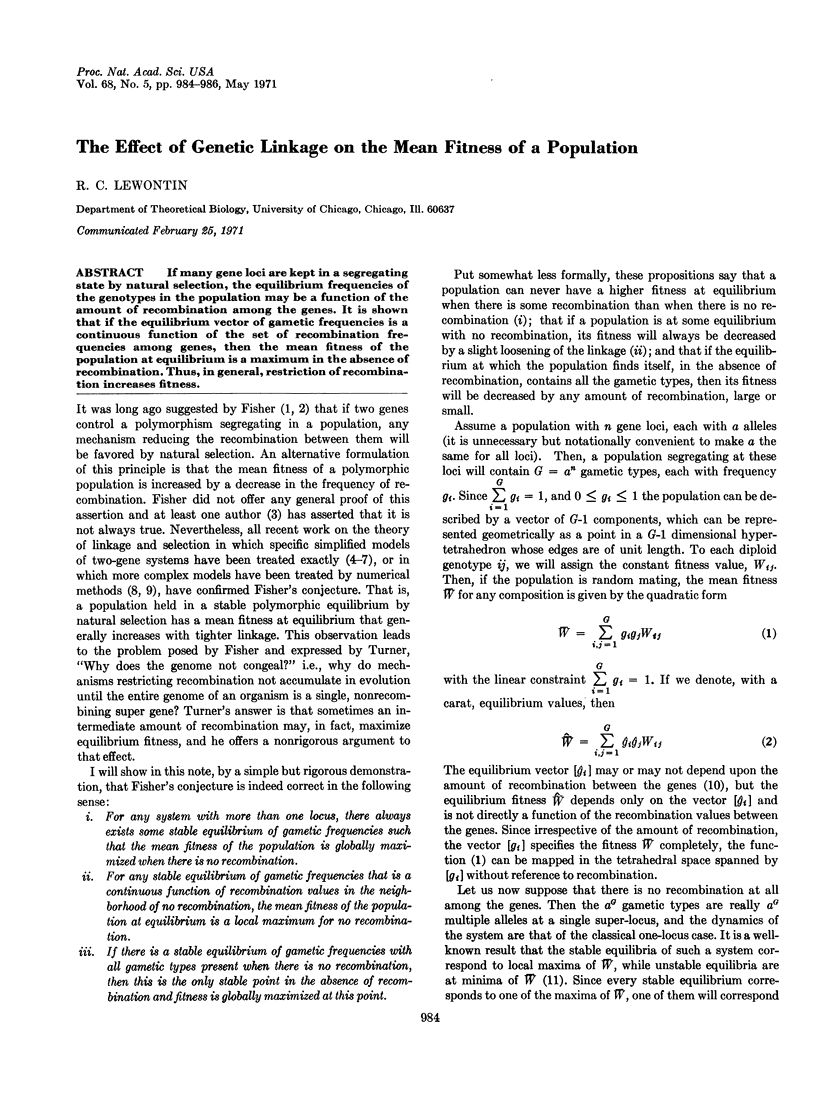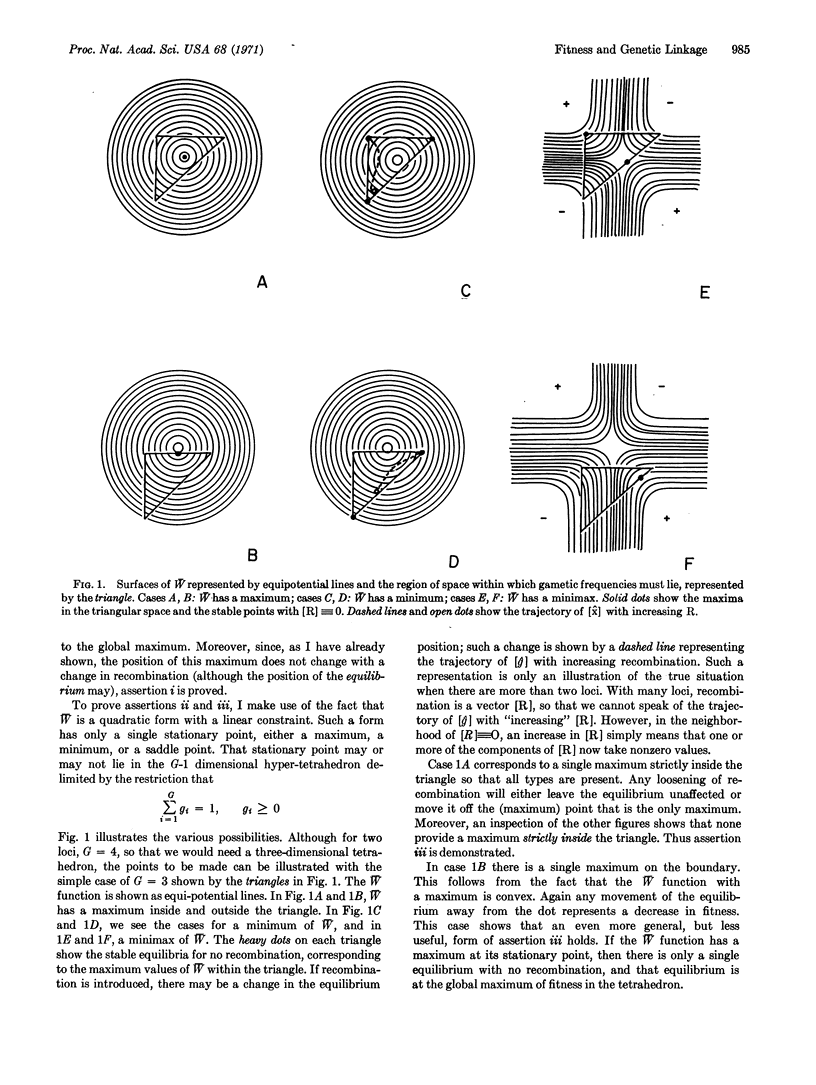Abstract
If many gene loci are kept in a segregating state by natural selection, the equilibrium frequencies of the genotypes in the population may be a function of the amount of recombination among the genes. It is shown that if the equilibrium vector of gametic frequencies is a continuous function of the set of recombination frequencies among genes, then the mean fitness of the population at equilibrium is a maximum in the absence of recombination. Thus, in general, restriction of recombination increases fitness.
Full text
PDF


Selected References
These references are in PubMed. This may not be the complete list of references from this article.
- Franklin I., Lewontin R. C. Is the gene the unit of selection? Genetics. 1970 Aug;65(4):707–734. doi: 10.1093/genetics/65.4.707. [DOI] [PMC free article] [PubMed] [Google Scholar]
- Karlin S., Feldman M. W. Linkage and selection: new equilibrium properties of the two-locus symmetric viability model. Proc Natl Acad Sci U S A. 1969 Jan;62(1):70–74. doi: 10.1073/pnas.62.1.70. [DOI] [PMC free article] [PubMed] [Google Scholar]
- LEWONTIN R. C. THE INTERACTION OF SELECTION AND LINKAGE. II. OPTIMUM MODELS. Genetics. 1964 Oct;50:757–782. doi: 10.1093/genetics/50.4.757. [DOI] [PMC free article] [PubMed] [Google Scholar]
- Lewontin R C. The Interaction of Selection and Linkage. I. General Considerations; Heterotic Models. Genetics. 1964 Jan;49(1):49–67. doi: 10.1093/genetics/49.1.49. [DOI] [PMC free article] [PubMed] [Google Scholar]
- Wright S. The Distribution of Gene Frequencies in Populations. Proc Natl Acad Sci U S A. 1937 Jun;23(6):307–320. doi: 10.1073/pnas.23.6.307. [DOI] [PMC free article] [PubMed] [Google Scholar]


